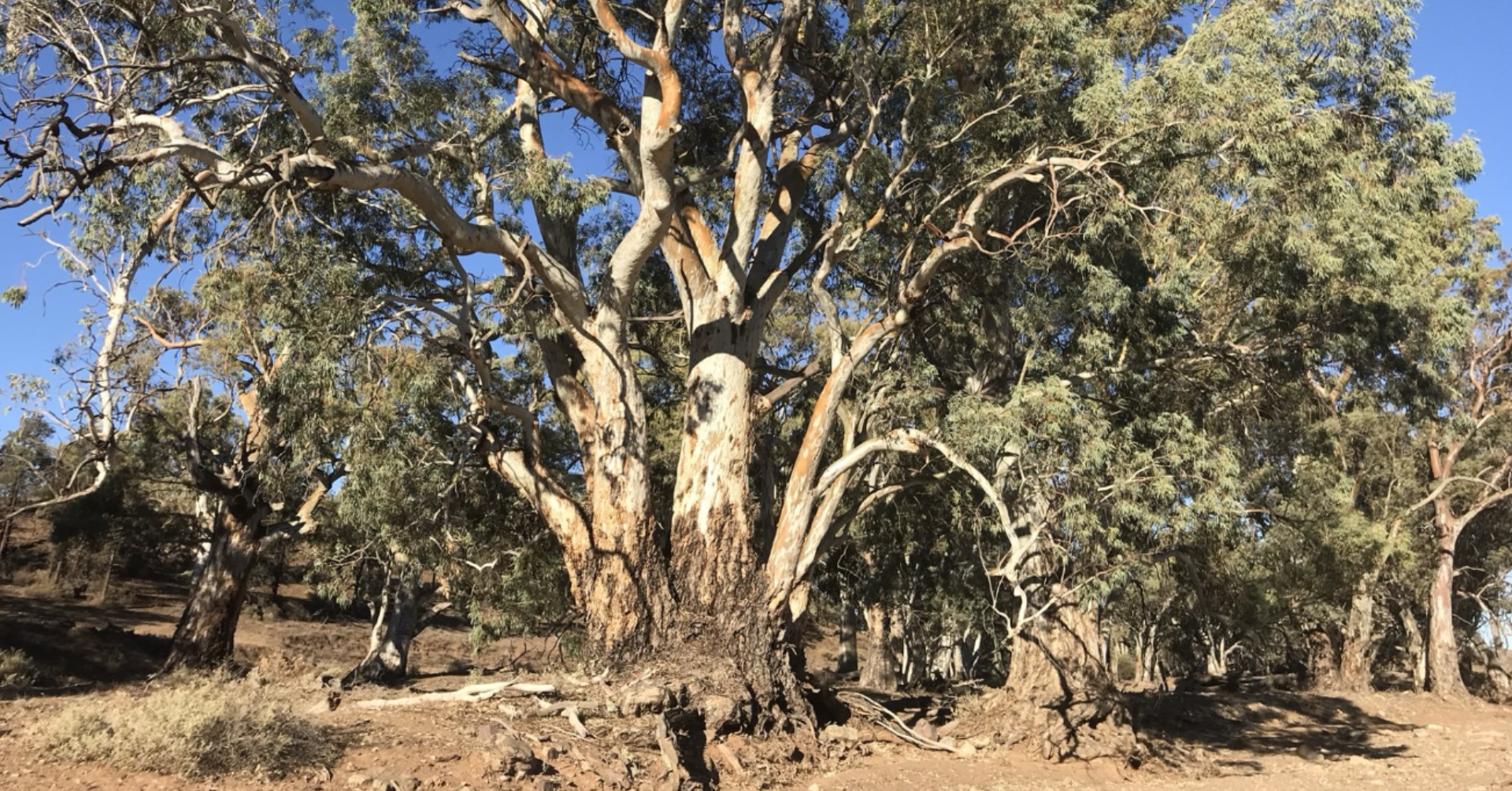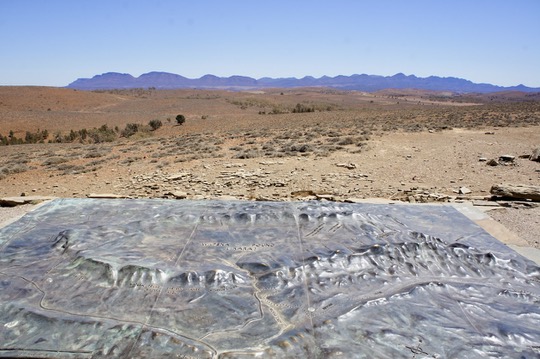The Significance of Cultural Heritage in the Pathmakers Framework 🌿🏞️🔍
Land holds memory. The tracks worn by ancestors, the rivers that guided movement, and the places of ceremony and gathering are more than physical features—they are the storylines of a people. The Pathmakers Framework invites us to see these landscapes not as separate from ourselves but as integral to our identity and the way we relate to the world. While Indigenous cultures have maintained deep and continuous relationships with Country for tens of thousands of years, settlers too have developed strong connections to place over generations. If we are not personally connected to a place, it is easy to overlook its significance—yet connection to land is fundamental to all of us, shaping our sense of belonging and responsibility.
Growing up on the Darling Downs, I came to understand this deeply. The Condamine River wasn’t just a watercourse; it was a presence that shaped our lives—flooding in summer, drying back to waterholes in drought, always drawing life to its banks. I remember wading through the shallows, feeling the mud between my toes, the dragonflies hovering just above the surface. The river carried history in its flow, from the stories of the Indigenous peoples who had lived along its course for thousands of years to the farmers who depended on its waters. Yet, as a child, I rarely heard the deeper stories. It was only later, as I listened and learned, that I realised how much had been omitted—how much I had taken for granted.
Tracing the Historical Footsteps of the Pathmakers 🚶♂️🛤️📖
For tens of thousands of years, people have moved across Country, following songlines, water sources, and seasonal cycles. These routes connected communities, carried trade and knowledge, and reflected a deep understanding of place. Many of these tracks still exist—sometimes in the lay of the land, sometimes in the stories passed down through generations. Even where roads and fences have reshaped them, the old paths still whisper their presence. Settler movements, too, created new paths, often disrupting older ones, but also forming their own relationships with the land, sometimes without recognising the deeper histories beneath their feet.
As a child on the Downs, I saw the landscape through the lens of my own family’s experience—where we planted crops, where the cattle were moved, where the old fences marked the boundaries of the farm. But the more I learned, the more I saw the traces of older pathways. The ridgelines that had been walked for generations, the places where waterholes still held echoes of past gatherings. These weren’t just empty spaces waiting to be filled with new stories; they were layered with meaning, with lives lived before ours.
This understanding also highlights the Environmental Connection landmark of the Pathmakers Framework. The land is not just something to be used—it is something to be understood, respected, and cared for. By connecting to Country and learning from traditional knowledge, we gain insights into sustainable practices that can help us navigate the challenges of climate change.
Key Landmarks and Their Cultural Relevance 🏛️🌳🎭
Every landmark within the Pathmakers Framework carries a story. Some have been documented through archaeology; others live on in oral tradition and Indigenous law. Rock carvings, ceremonial sites, and age-old meeting places hold layers of meaning—ecological, spiritual, and historical. They remind us that landscapes aren’t just backdrops to human activity; they are active participants in the story. Yet, when place is treated as an externality—something separate from human life rather than intertwined with it—we risk severing our connection to it and losing vital knowledge about how to live in balance with our surroundings.
Aboriginal peoples’ ongoing claims for their cultural rights, as contained in the United Nations Charter, demand recognition and respect for their intimate connection to the land. Their knowledge of caring for Country is integral to environmental sustainability. By engaging with this knowledge, we can foster a deeper understanding of Governance Innovation—creating systems that reflect the ways in which Indigenous peoples have governed land for thousands of years. These systems, based on respect, reciprocity, and sustainability, can offer vital solutions in the face of environmental challenges.
Indigenous Knowledge and the Pathmakers’ Legacy 🎶🗺️🌾
Pathways aren’t just about physical travel—they are also about knowledge. Indigenous cultures have always mapped the world through songlines, seasonal indicators, and Dreaming stories, encoding ecological and spiritual wisdom into the landscape itself. The Pathmakers Framework honours this way of knowing, acknowledging that cultural heritage isn’t static or ‘lost’—it’s still being carried, shared, and lived. This understanding of place is not exclusive to Indigenous traditions; settlers who have spent generations on the land also develop knowledge and deep-rooted connections. Recognising these layers of history can foster a more profound respect for place and for those who hold its knowledge.
This is also where the Community Collaboration landmark of the Pathmakers Framework comes into play. When we engage with Indigenous communities in meaningful dialogue, we build a stronger, more inclusive understanding of how to care for our land, together. True collaboration means respecting and learning from each other’s knowledge systems, and acknowledging the rightful place of cultural heritage in shaping modern life.
The Role of Storytelling in Preserving Heritage 📖🔥🎨
Stories keep heritage alive. Whether spoken, sung, painted, or danced, they carry knowledge forward, weaving past and present together. In the Pathmakers Framework, storytelling isn’t just about recounting history—it’s about keeping relationships with Country strong. When we listen to these stories, we’re not just learning about the past; we’re stepping into a deeper way of seeing the world. But we must also be aware of the risk of treating these narratives as something outside of ourselves, as if cultural heritage belongs only to others. Our place is ultimately our planet, and to truly connect with it, we need to recognise that its stories belong to all of us and require our respect, engagement, and care.
This connects directly to the Economic Reciprocity landmark of the Pathmakers Framework. Economic systems, when aligned with cultural heritage and care for Country, can ensure that the benefits of land stewardship are shared equitably, supporting sustainable livelihoods and community resilience.
Modern Applications of the Pathmakers Framework 🌍🔬🏡
The Pathmakers Framework isn’t just about looking backward—it’s about shaping how we move forward. Today, it’s influencing heritage conservation, urban planning, and environmental management. By integrating Indigenous knowledge with modern mapping and conservation efforts, we can protect these cultural landscapes while ensuring that they continue to hold meaning for future generations. Recognising our own connection to place can guide us in these efforts, helping us move beyond seeing land as a resource to be managed and toward understanding it as a living entity with which we are in relationship.
Challenges in Conservation and Recognition ⚠️🏗️🌿
Despite its significance, cultural heritage connected to the Pathmakers Framework faces threats—urban expansion, climate change, and policies that fail to recognise its full value. Preservation isn’t just about protecting ‘historic sites’—it’s about ensuring that these pathways remain part of the living landscape. That takes genuine collaboration between Indigenous custodians, researchers, policymakers, and local communities. It also requires us to confront the ways in which modern systems often treat connection to Country as an externality—something optional rather than essential to our wellbeing and survival.
This challenge calls for Governance Innovation, where Indigenous peoples’ rights to care for Country are recognised and integrated into policy and practice. Their claims for cultural rights aren’t just about the past—they are essential for the future, as their knowledge is key to addressing the climate crisis.
How to Engage with the Pathmakers Cultural Landscape 🌎🛶📚
There are many ways to connect with the Pathmakers Framework. Visiting cultural landmarks, supporting Indigenous-led heritage projects, and learning from those who carry this knowledge are all ways to engage. But more than anything, it starts with listening—really listening—to the stories the land and its people have to tell. At the same time, we must look inward and reflect on our own connection to place. How do we relate to the land beneath our feet? What stories do we carry? If we can strengthen that awareness, we move closer to a future where connection to Country is no longer seen as separate from daily life but as something fundamental to it.
Conclusion: Honoring the Past, Shaping the Future 🔄🏞️🕊️
The Pathmakers Framework reminds us that cultural heritage isn’t just about the past—it’s about an ongoing relationship with Country. By respecting and engaging with these pathways, we do more than preserve history; we step into a deeper, more connected way of being in the world. These stories, these landscapes, these tracks—they are still alive, still speaking. It’s up to us to listen, to recognise our own place within them, and to move forward with the understanding that our relationship with the land is not separate from us, but an intrinsic part of who we are.
Further Reading
There are five landmarks in the Pathmakers Framework. They are:
1 Economic Reciprocity – This landmark focuses on fostering mutual exchange and ensuring that communities benefit equitably from the resources and opportunities that come from working together, with a strong emphasis on sustainability and shared prosperity.
2 Environmental Connection – This landmark is about building and strengthening the connection between people and their environment, recognising the interdependent relationship that sustains both. It highlights the importance of caring for country and understanding the environmental processes that shape and are shaped by human actions.
3 Community Collaboration – This landmark focuses on working together, building trust, and strengthening relationships within and between communities. It looks at how collaboration can drive collective action and create shared solutions for the challenges communities face.
4 Relational Governance – This landmark encourages the development of new and inclusive governance systems that respect the rights of all people, particularly Indigenous peoples, and foster resilience, adaptation, and sustainability in the face of changing social and environmental conditions.
5 Cultural Heritage – This landmark underscores the importance of preserving and celebrating cultural practices, traditions, and knowledge. It fosters an understanding of how cultural heritage shapes identity, strengthens communities, and contributes to the resilience of people and place.
These landmarks work together, each influencing and being influenced by the others, forming an interconnected framework that promotes holistic and grounded approaches to community resilience, cultural heritage, and environmental stewardship.
Tags: cultural heritage, country, indigenous rights, storytelling, living land, connections to place


